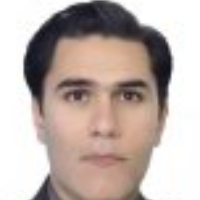The study of DEM preparation methods on drainage network analysis
Abstract:
GIS users usually use the contour line maps for construction of Digital Elevation Models (DEMs) but the accuracy of these data is not completely obvious in terrain and hydrologic analysis. The aim of this paper is determination of quality and accuracy of drainage network analysis resulted from a DEM which is derived from contour lines map with 1:50000 scale. Study area with 443 squares Km is located in the northeastern of Iran and combined of mountain، hills، pediment، alluvial fans and floodplain. ArcGIS package have been used for manual digitizing of contours and extraction of stream network respectively. We have compared the Extracted networks from TOPODEM (DEM layer) with the one derived from high resolution satellite Images (IRSpan) for assessment the DEM accuracy. For determination of TOPODEM accuracy we took the extracted networks from satellite images as a real stream channels. This is partly because more detailed scale of the satellite images guarantees a good reference map with which to compare the network obtained from the DEM. The comparison process has been done in both raster and vector formats. These comparisons are included morph metric characteristics as river frequency، stream length، stream density and drainage ratio as well as the spatial pattern of the drainage lines، which was evaluated by visual analysis and calculating the differences rate between two networks. Visual study and numerical results showed only a network map which is derived in 50 threshold value is near to the network extracted from satellite images. River order and cell frequencies is been decreasing in higher threshold values. The comparison of the cell and line frequencies presented good agreement for all stream orders but there are large differences for 4، 5 and sixth- order streams. The differences were measured more than 80 percents for 4، 5 and sixth-order Rivers in the study area. it means the distribution of first- order rivers have a big difference with natural drainage patterns caused we were done the extra analyzing in the separate geomorphologic units. the results showed better agreement in the mountainous and hilly parts only for first and second-order streams. The differences for above areas are ranged between 20 to 40 percentages at the first and two river orders. The highest differences were found in the alluvial fan and plain area which is ranged between 60 to more than 80 percents in different orders. The results for river lengths shows satisfied agreement degree for pediment and mountain units especially for second-order Rivers. We found the lower agreement degrees for alluvial fans and plain sectors. The Drainage density calculated for whole basin area shows good agreement between rivers، which extracted by different methods. Obviously، differences appear in separate Geomorphologic units as we can see completely incorrect results for alluvial fan and plain sectors for rivers delineated from DEM. The best agreement of drainage density is been recognized for the pediment where the surface slop is moderate. In the mountain area drainage density for the layer extracted from satellite image is higher than the layer extracted from TOPODEM while the results are inversely for alluvial fans and plain areas. Then it should be better to use the results only for mountain and pediment units. results for alluvial fan and plain sectors for rivers delineated from The best agreement of drainage density is been recognized for pediment where the surface slop is moderate
Keywords:
Language:
Persian
Published:
Iranian Journal of Watershed Management Science and Engineering, Volume:9 Issue: 30, 2015
Pages:
59 to 66
https://magiran.com/p1453844
مقالات دیگری از این نویسنده (گان)
-
A Quantitative Assessment of The Impacts of Agricultural Development, With A Focus on Food Security and Desertification Risk in The Balajam Plain of Torbat Jam County, Khorasan Razavi Province
Mostafa Rezvanimoghadam, Morteza Akbari *, Mozhgan Sabet Teimouri, Shojaat Zare
Desert Management, -
Desertification Risk Assessment and Providing Management Strategies using the DPSIR-M Model in Khorasan Razavi province
Morteza Akbari *, Mahboobeh Sarbazi, Ali Sibevei, Somayeh Fadaei
Journal of Geography and Environmental Hazards,



